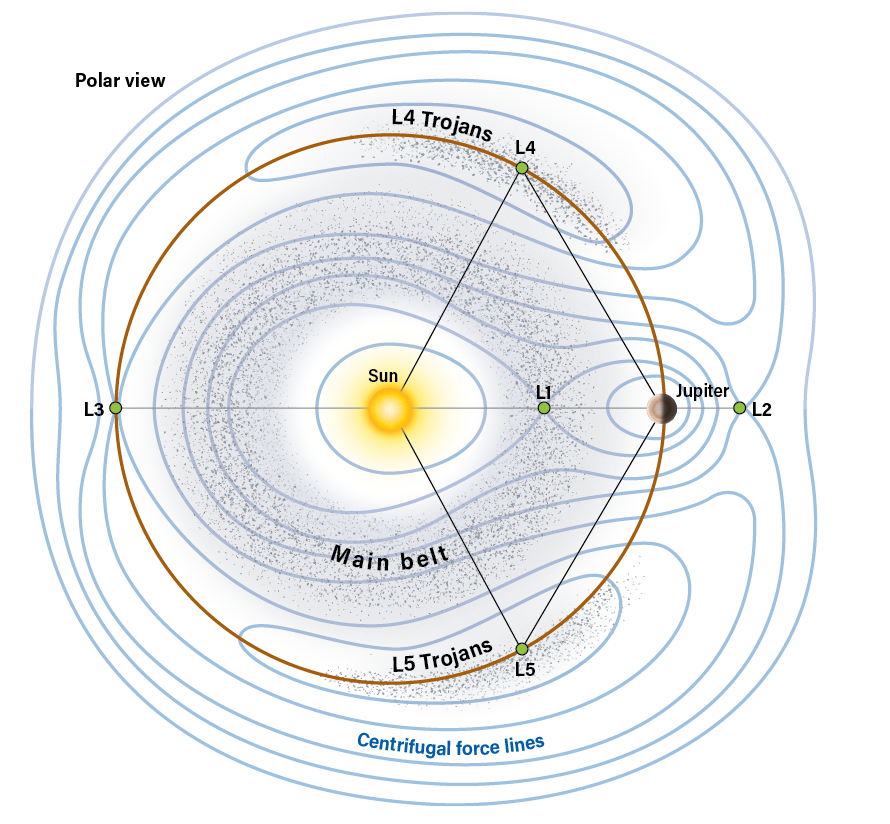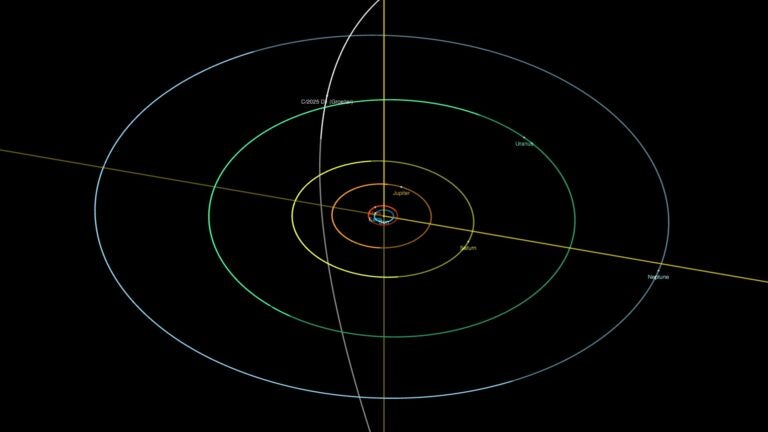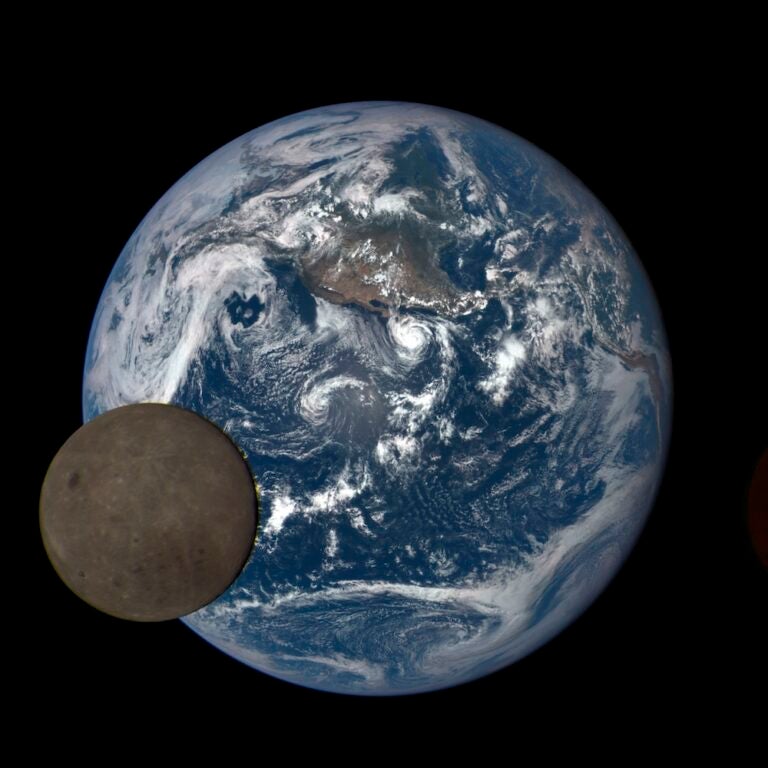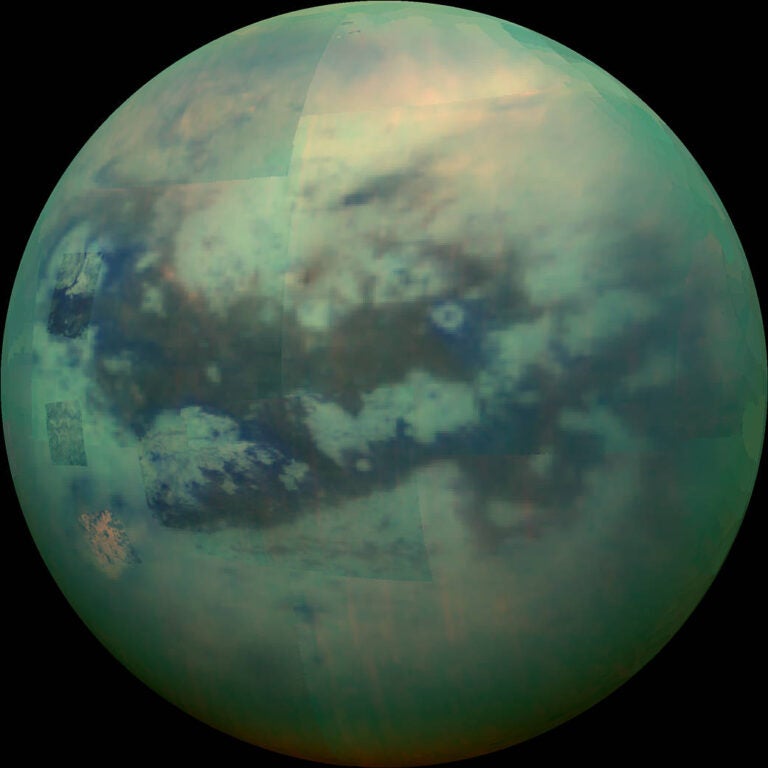
How closely packed are Jupiter’s Trojan asteroids compared to the density of the main belt?
Doug Kaupa
Council Bluffs, Iowa
Jupiter’s Trojans are asteroids that share the gas giant’s orbit around the Sun, clustering at one of two Lagrange points in the Jupiter-Sun system (L4 or L5, 60° ahead of or behind Jupiter in its orbit, respectively).
It turns out that main-belt asteroids (MBAs) and Trojan asteroids occupy a relatively similar volume in space. The bulk of MBAs lie between 2.1 and 3.3 AU from the Sun, while Jupiter’s Trojans are 5 to 5.3 AU from our star. Most of these bodies (in both groups) have orbital inclinations less than 30°.
You can approximate the volume these asteroids occupy using rings. So, picture a torus with a circular cross-section, with the inner and outer diameter being the inner and outer extents of the orbits just given, so that the volume each occupies is 61 AU3 and 58 AU3, respectively, for MBAs and Trojans. (One AU, or astronomical unit, is the average Earth-Sun distance of 93 million miles [150 million kilometers]. So, 1 AU3 = 8 x 1023 miles3 [2.7 x 1024 km3].)
There are about 108 MBAs larger than about 330 feet (100 meters) in diameter, and about 107 Trojans of this same size. That makes the volume density of asteroids in the main belt about 10 times higher than that of Jupiter’s Trojan asteroids.
Still, MBAs are hard to come by in the vastness of space. A sphere with a radius of about 249,000 miles (400,000 km) contains only one MBA larger than 330 feet (100 m) in diameter.
Simone Marchi
Staff Scientist, Southwest Research Institute, Boulder, Colorado









